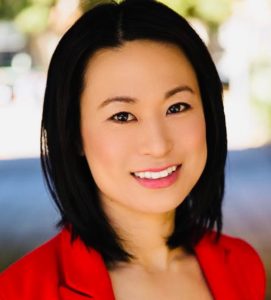March 1, 2024
TORONTO — At THE Myopia Meeting in December 2023, Monica Jong, OD, PhD, and Langis Michaud, OD, MSc, FAAO, FSLS, FBCLA, FEAOO, shared a case study of a quickly progressing myopic boy, highlighting the efficacy of Johnson & Johnson Vision’s ACUVUE Abiliti 1-Day Soft Therapeutic Lenses for Myopia Management. They also revealed the six-month data from the company’s pilot study on the lenses.
Getting into the Case Study
Dr. Michaud gave attendees details of the case study, which focused on an 8-year-old Caucasian male who was referred to the clinic at the University of Montreal and was diagnosed with myopia at 6 years old.
“Andy refused to wear glasses; he broke them regularly,” Dr. Michaud said. “Surprisingly, he had no complaints of distance blur — he saw pretty well with no glasses, according to him, but he was complaining about headaches, mostly because he was squinting all the time. He had problems at school, his behavior was not great. Dad is hyperopic, and mom is myopic, at -6.00D, and she’s really concerned about her son.
“According to the referral letter, at Andy’s first exam at 6 years old, he was at -0.50D, noncycloplegic. Six months later, the optometrist confirmed -1.25D. He was referred to us two years later.
“At that point, Andy wasn’t wearing glasses and his binocular vision was within normal limits. His cycloplegic refraction was at -2.75D OD and -2.50D OU. So, in a year and a half, Andy gained 1.75D making him a fast progressor. Myopia onset before the age of 10 is considered a risk factor for fast progression. Under or no correction is another risk factor for myopia evolution.
“In such a case, we have to correct the myopia right away,” Dr. Michaud explained. “We already know that the patient hates glasses, so the door is wide open to begin the discussion talking about contact lenses. I always start the discussion with the kid, because I want to have them involved at the beginning. I asked Andy if he would want to be the cool guy in the classroom. He said, ’Yes.’ I told him, ‘Let’s have contact lenses because not every other kid has contact lenses, and you’ll be the kid with contact lenses in your class. And guess what, you’ll probably be better at video games (limited hours) because you’ll see better.’ This made him really interested in contact lenses.
“In this case, when a patient has small pupils and lower levels of myopia, we prefer to go with soft lenses. Why? In my opinion, regular OrthoK lenses provide defocus at a 1:1 ratio. For example, hypothetically, you correct -1.00D then you generate +1.00D add, which we consider to be not sufficient to control young, fast progressing myopes. Some practitioners choose to customize OrthoK lens parameters, but a simpler way to address the issue is to fit soft myopia management lenses with high treatment power.
“This is why we decided to go with the ACUVUE Abiliti 1-day soft myopia management lens. The patient was really compliant. He really liked to be the cool guy in the classroom, and he really enjoyed being able to see. He told us, ‘I missed so many things not seeing clearly at distance, and now I enjoy every moment of it.’ Binocular vision was not affected — we measured before and after to make sure there were no changes. Movement and comfort were good. The base curve may appear steep at 7.9, but it has a calibrated diameter that defines an optimal sag for a young eye. To really evaluate the lens, looking at its movement on the eye is crucial. Contrary to single vision lenses, we prefer myopia management lenses to be more stable with less movement. Stable lenses provide optimal visual acuity and keep the defocus within the pupil area, which is crucial.
“At one year, we had minimal increase in the axial length — 0.12 mm change — and no refractive change. I’m often asked, ‘Do we have to measure axial length?’ I believe we should. Pathologies come from eye elongation, not necessarily power increase. Would you treat glaucoma just with intra-ocular pressures? The answer is no. You need visual fields, you need a scan of the optic nerve, you need a lot of things. For gold standard monitoring of myopia, you should consider evaluating axial length.
“Over two years, Andy’s axial length went up 0.32 mm, and his refractive error went up 0.50D. So, we brought this fast progressor to regular, almost emmetropic levels for a child of the same age, and this is the goal of myopia management.”
ACUVUE Abiliti 1-Day Lenses: Their Role in Slowing Progression
After Dr. Michaud wrapped up the case study, he handed the presentation over to Dr. Jong, who talked about the RingBoost technology in the ACUVUE Abiliti 1-Day lenses.
“What’s so magical about this lens?” Dr. Jong asked attendees. “Well, this is the first myopia management-approved lens that comes in a silicone hydrogel material. The amazing thing about this lens is that it has a +7.00D treatment power in the two concentric ring zones on the lens and a +10.00D central boost. Light traveling through the +7.00D treatment zones are not focused on the visual axes, but instead are redirected and focused in a ring around the visual axes. This allows so much more treatment power to be engineered in the lens while maintaining good vision.
“Typical multifocal type contact lenses have concentric rings, but the light is still focused on the visual axes. That’s why they can only have a maximum of about +2.00D before it can impact vision. Our studies are multi-site, multi-center, multi-ethnic groups of children (gold standard), and they have demonstrated that more than 95% of the children trialed wearing ACUVUE Abiliti 1-Day lenses have achieved a visual acuity of 20/20 or better. They also had no binocular vision impact.”
Six-Month Study Results: Slowing Axial Elongation
Dr. Jong then broke down the most recent results from Johnson & Johnson Vision’s six-month pilot study that was published in Ophthalmology Science.
“This study was done in 199 children between the ages of 7 to 12,” Dr. Jong said. “One of the sites was the University of Waterloo, Canada, and it was a multi-site, multi-ethnic, randomized controlled trial and double masked. The control was a single-vision contact lens, which was a daily disposable ACUVUE OASYS, compared against a dual focus design on an OASYS material, and the Abiliti 1-Day lens.
“The results at six months were remarkable. The Abiliti 1-Day lens had the least axial elongation of all of them. The difference was 0.105 mm compared to single vision, and it was two times better than the dual focus on an OASYS material in that particular study. Kids were asked to wear these lenses on average five days a week, eight hours per day. So, if your child wears these lenses for only five days a week, eight hours per day, they’ll receive, on average, this treatment effect of 0.105 mm at six months.
“As we know, compliance matters. If a child doesn’t wear the treatment, then they’re not going to receive the average reported efficacy. A study I was part of in 2015 reported that for myopia management lenses, there is a dose response relationship — the longer you wore the lens, the greater the treatment effect. We know that the advantage of contact lenses, is that it’s not so easy to remove from the eye, and the contact lenses rotate and move with the eyeball, ensuring treatment reaches the retina.
“The lens is available in a wide range of powers from -0.25D to -8.00D. It’s built from the ground up with kids in mind. It comes in a smaller diameter of 13.8 millimeters and slightly steeper base curve, so it’s great for the pediatric eye. It comes in the OASYS material, which all of us know is fantastic for handling and comfort in addition to the advantages of the high DK and UV blocking.
“Studies are ongoing and, in general, optical treatments have demonstrated long-term efficacy. The longest studies today for soft contact lens treatments are reported up to six years and even longer for orthokeratology. There’s proven efficacy for the Abiliti 1-Day lens. It’s approved by Health Canada, approved in other parts of the world, and FDA trials in the U.S are currently underway.”
Prescribing Myopia Management for Each Child
To wrap things up, Dr. Jong emphasized that each patient’s unique needs should be the driving force behind all clinical decisions.
“It’s not about the product. It’s about looking at the child in your chair and choosing the most appropriate treatment. What is the child’s lifestyle? Do they like sports? Do they like swimming? We also need to be looking at their clinical profile and patient and parent preference because often parents are part of the decision-making and contact lens journey. So, choose the most appropriate treatment for that child.”
Looking Ahead on Managing Myopia
“We’re at a great time in optometry,” Dr. Jong said. “We can do so much more. I remember when I started in this space, there was nothing really available. I was still talking about why myopia matters. We published the paper at BHVI that 50% of the world will have myopia by 2050. It means a lot to me that today we can actively do something to mitigate this problem and address future vision impairment before it happens. At the same time, let’s give kids lifestyle advice, because parents can relate to this a lot more. Suggest the 20-20-2 rule. Every 20 minutes look into the distance for 20 seconds and go outside 2 hours a day.”















